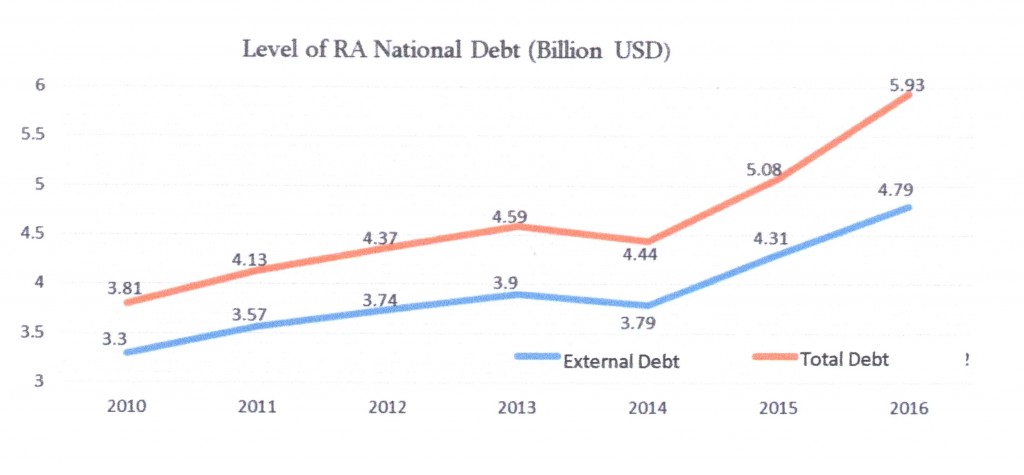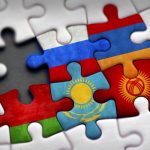- 10 February, 2017
- Economy and Energy

The level of national debt is one of the basic indicators describing the economic system of the country. The importance of the national debt consists in that it affects the present and future well-being of the whole society since the obligation of paying off the national debt is laid on each citizen. In this respect, it is interesting to examine how the RA national debt changed during 2016.
Dynamics of RA National Debt
According to data published by the RA Ministry of Finance, RA National debt formed 5.93 billion USD on December 31, 2016 compared to 5.07 billion the previous year. This means that during one year, the RA national debt increased by 900 million USD or 16.9%. It is interesting that under the newly formed Government, the RA national debt has grown by 373 million USD since September 30, 2016.
At the end of 2016, the share of external debt in the RA national debt formed 80.85%. Currently, the RA external debt makes up 4.79 billion USD compared to the 4.32 billion USD the previous year.
As it can be seen from the figure, the RA external debt has increased by about 1 billion USD during the last two years. In this regard, there is a widespread view that the RA external debt does not present any danger as its 60% ratio with the GDP is within the permissible limit. Nevertheless, according to the International Monetary Fund, the most important indicator for assessing the danger of external debt is the ratio between the debt and expert volumes since foreign currency assets for national debt service can be obtained through exports. And the RA external debt has long exceeded the threshold of stability. In 2016, the ratio between the RA external debt and export volumes formed 295% compared to the permissible 200%.
Along with the increase in volume of external debt, its service has also become “more expensive”. Thus, by the end of 2015, the average interest rate on the RA government debt formed 4.5%. Meanwhile, by the end of 2016, it formed 4.9%. We should add that the share of external debt service in the state budget formed 7.2% in 2016. That figure will reach 8.8% in 2017.
Structure of RA External Debt
Loans from international organizations make up about 84% in the RA external debt structure. By the end of 2016, the International Development Association (IDA) was Armenia’s largest creditor, which accounted for 32.6% of the RA external debt. One of the major RA creditors is also the International Bank for Reconstruction and Development (17.7%), Asian Development Bank (14.9%), as well as International Monetary Fund (3.8%).
During 2016, the RA external debt increased by about half a billion USD. The largest approved by the RA Government during 2016 are given below:
- During last year, 115 million EUR loan program was signed with Agence Francaise de Developpement (AFD) for the construction of Vedi reservoir and for the co-financing of the 4th Development Policy Loan.
- 51 million EUR loan program was signed with the European Investment Bank for the construction of the Armenian M6 interstate road.
- 135 million EUR loan program was signed with the International Bank for Reconstruction and Development for local economy and infrastructures development, financial recovery of the energy system and co-financing of the 4th development policy loan.
- 20 million EUR loan package was provided by the European Bank for Reconstruction and Development for creating a regional disposal site in Kotayk and Gegharkunik regions and improving the roads in Gyumri city.
- 134 million EUR loan program was signed with the Asian Development Bank for improvement of Armenia-Georgia border regional road and development of infrastructures.
In parallel, the RA Government also obtained loan funds from foreign countries, the share of which formed 15% in the RA external debt structure at the end of 2016. Armenia’s largest creditor country is Japan, which accounts for 7.1% of the RA external debt. Among large creditor countries are Germany (3%), France (2.4%), Russian Federation (1.5%), as well as the United States of America (0.6%).
Andranik Manukyan,
“Union of Informed Citizens”





